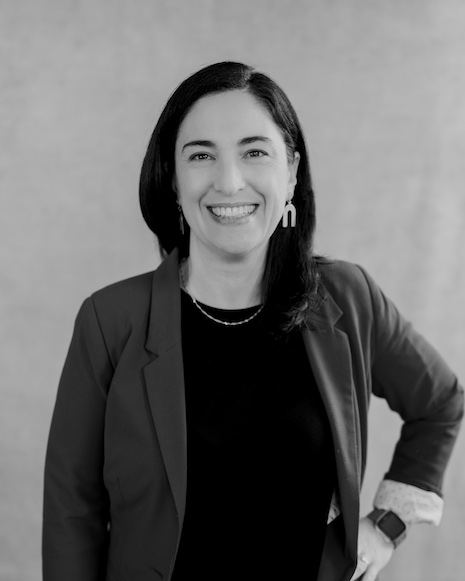
by: Ericka Colvin, Senior Associate
Last fall, I had the opportunity to attend the 2023 AIA Women’s Leadership Summit, in my hometown of Boston, MA. This annual event brings together a diverse group of women in architecture, design, and the broader building industries for education, networking, and inspiration. With over 900 attendees, the AIA celebrated an historic moment as 2023 President Emily Grandstaff-Rice, FAIA, 2024 President-elect Kimberly Nicole Dowdell, AIA, and 2025 President-elect Evelyn Lee, FAIA, shared the stage. This marked the first time in history—since 1857—that the previous, current, and incoming presidents are all women, as well as the first time AIA has seen two consecutive female presidents of color.
Months after the event, I’m not surprised that what sticks with me most are the moments that expand the very nature of what architecture is. Outer space, public sculpture, and equity-centered initiatives. Some may wonder, aren’t these outside of architectural practice? I have always been drawn to the tension in this question and found it leads to the most inspiring corners of our ever-expanding architectural tent.
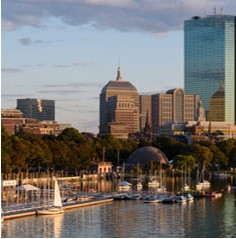


Many of my favorite conference takeaways align with the three sustainable design outcomes outlined in the Integrus Sustainability Action Plan:
The Architecture of Space and Decarbonization
- Melodie Yashar wowed attendees with images of her Mars X-House and Mars Dune Alpha, a competition design and prototype structure built by 3D printed Mars soil. Her work explores designing with additive printing technology appropriate to location and for extreme human resilience.
- How can our Pacific Northwest design work be influenced by a restricted sense of what materials are available?
- How can we inject the benefits of design into areas where it has previously seemed unnecessary?
Equity-Centered Initiatives and Health & Wellbeing
- Aurora James inspired the audience with her tale of starting the 15% Pledge to support Black-owned businesses in the large retail sector. Her story was a reminder to listen to your creative gut and challenge the notion that promoting equity and business success are unrelated.
- James’ work was already an inspiration when creating the Integrus Equitable Specification Initiative and reminds us to keep growing this internal effort and telling its story.
- I learned that architects and designers have 26 times the specification power as the average American consumer has buying power. (ThinkLab 2023 Benchmark Study Researching The World Of Design). Every Integrus project, no matter the size or client, is an opportunity to embed equitable outcomes throughout our practice.
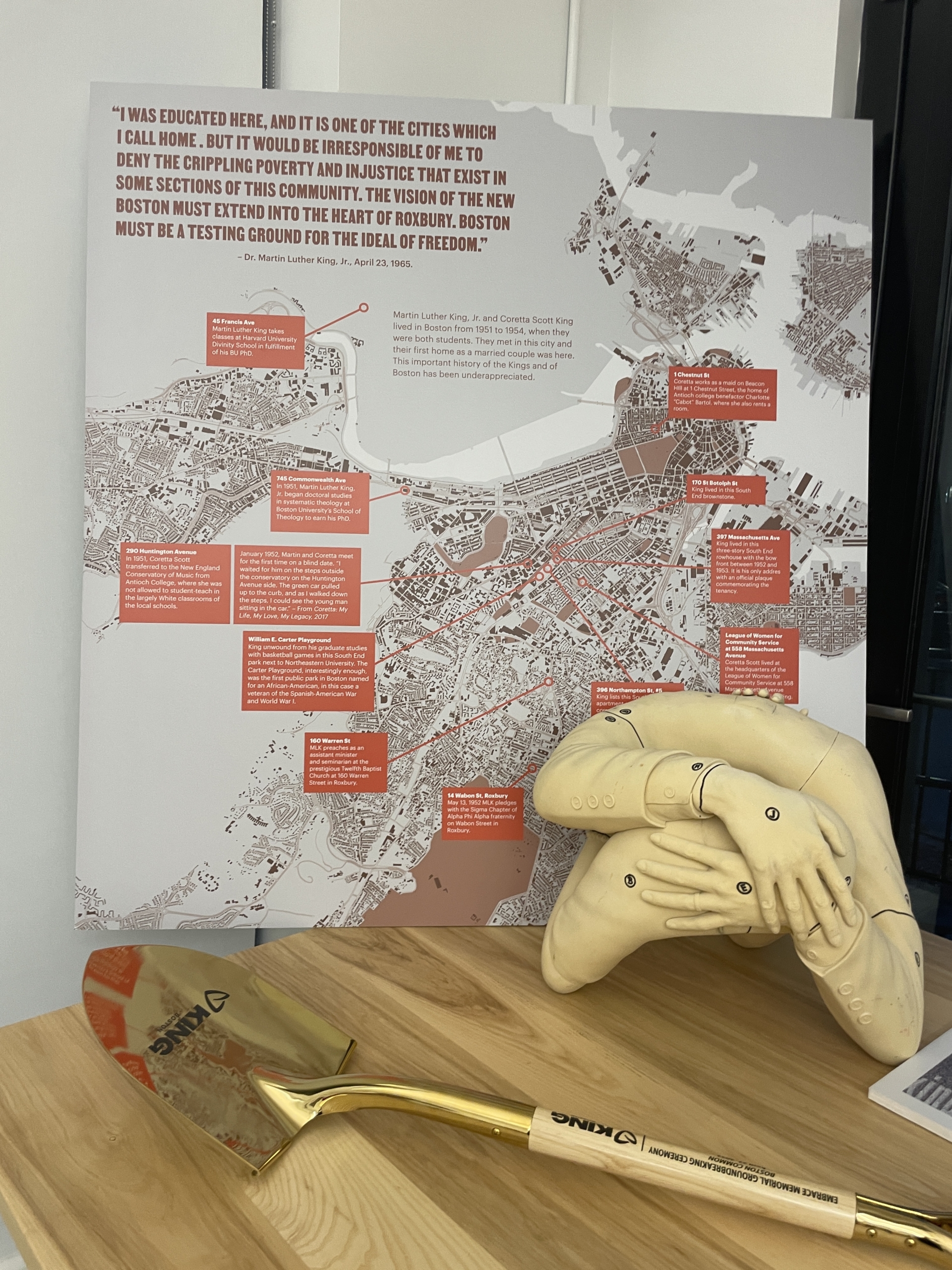
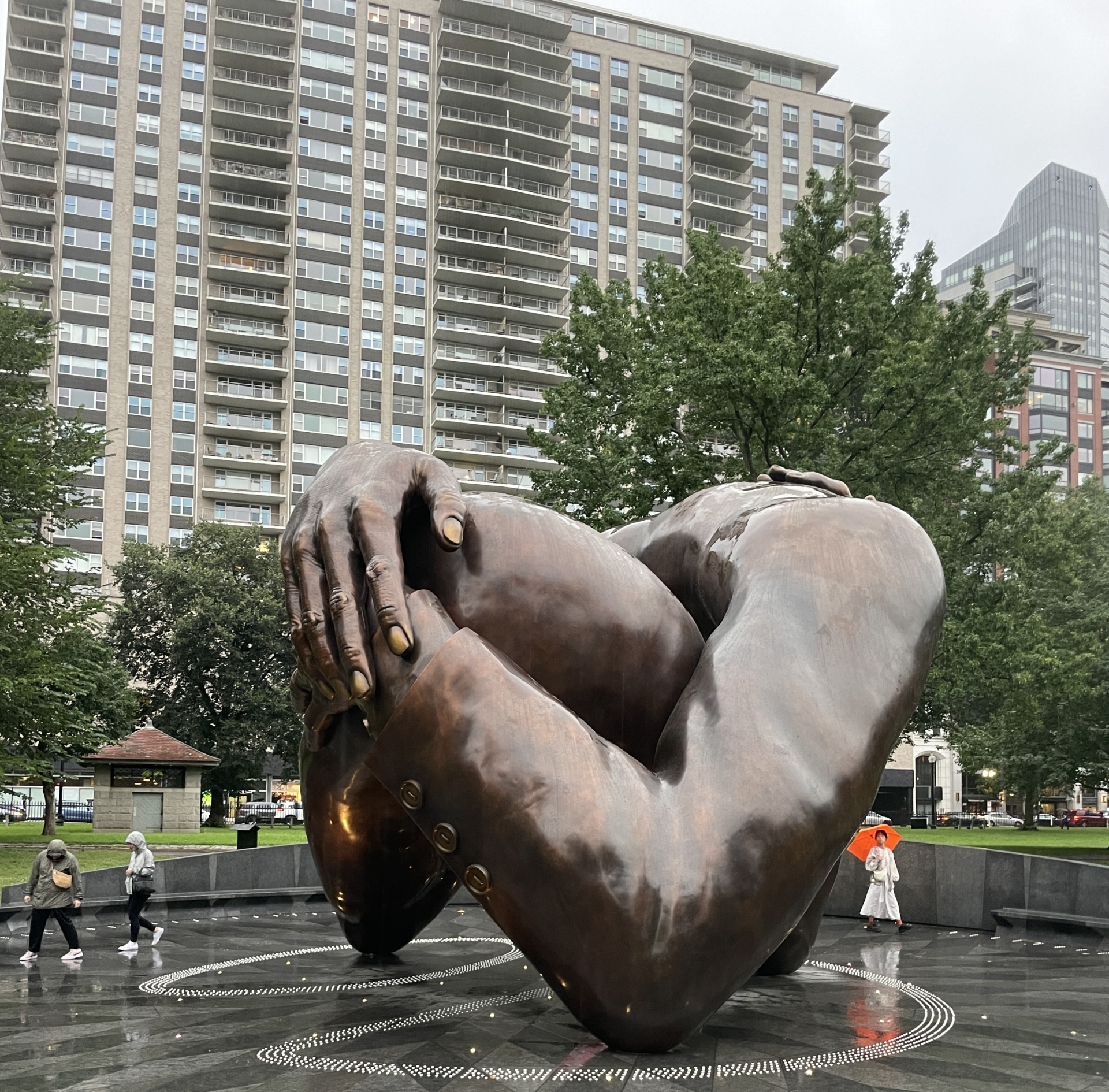
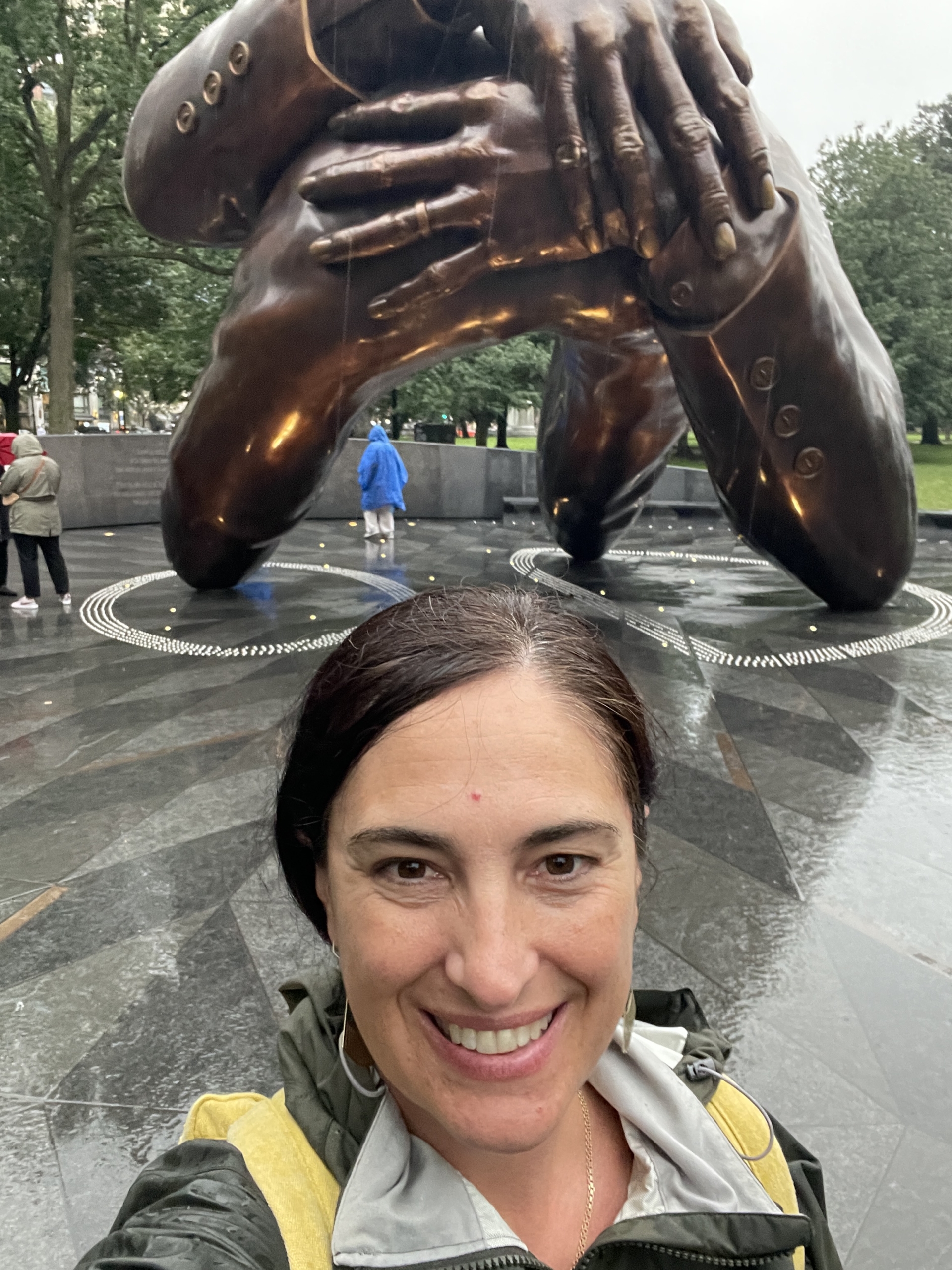
Public Sculpture and Place
- Finally, I had an opportunity to tour the Embrace Memorial which is a permanent monument “representing the Rev. Dr. Martin Luther King Jr. and Coretta Scott King’s love and powerful presence in Boston, a time that helped shape their approach to an equitable society”. Unveiled in the Boston Common in early 2023, this abstract artwork was chosen by a community vote.
- Through a steady Boston rain, we heard about the collaboration between the community non-profit Embrace Boston, Mass Design Group and artist Hank Willis Thomas. Of note, the 31’ wide and 21’ tall steel and bronze statue was produced by a team at the Walla Walla Foundry in Washington.
- Exploring this monument in a public space I have visited since childhood, and now bring my kids to every summer, was powerful and poignant. Our urban public spaces have so much to offer–discovery, community, joy–and the same is true in many of Integrus’ public and educational projects.
Forging a Path
The keynote panel conversation dealt with the idea that women have had to forge their own path in architecture, and that this should be considered a “super-power” rather than a weakness. The panelists highlighted “listening, storytelling, and empathy” as among the attributes that enabled women to set themselves apart professionally. To me, this felt true but also not quite the whole story. I would have loved to hear more about their design work, research, and activism. If you’re not familiar with these architects, I highly encourage you to check them out:
- Tiffany D. Brown, Assoc. AIA, executive director at the National Organization of Minority Architects (NOMA)
- María Bellata, FASLA, head of landscape architecture at North Carolina State University Tamara Eagle Bull, FAIA, professor at Arizona State University
- Melissa R. Daniel, Assoc. AIA, creator and host of the “Architecture Is Political” podcast
- Billie Tsien, AIA, partner at Tod Williams Billie Tsien Architects.
It was empowering and exciting to be among so many smart and talented female architects, and I believe women supporting women in the field is vitally important. However, at the end of the day, we are all architects – the gender qualifier shouldn’t be necessary but can be important depending on the context. I also want to make sure this conference community leaves room for all gender identities and experiences, and at times I questioned if it was too focused on the binaries of the female and male experience. I acknowledge that my and many others’ experiences have been shaped by a profession where just 1 in 4 working architects in the US is female. While that is changing, I wonder about the comparatively different experiences of our emerging professionals and most experienced leaders.
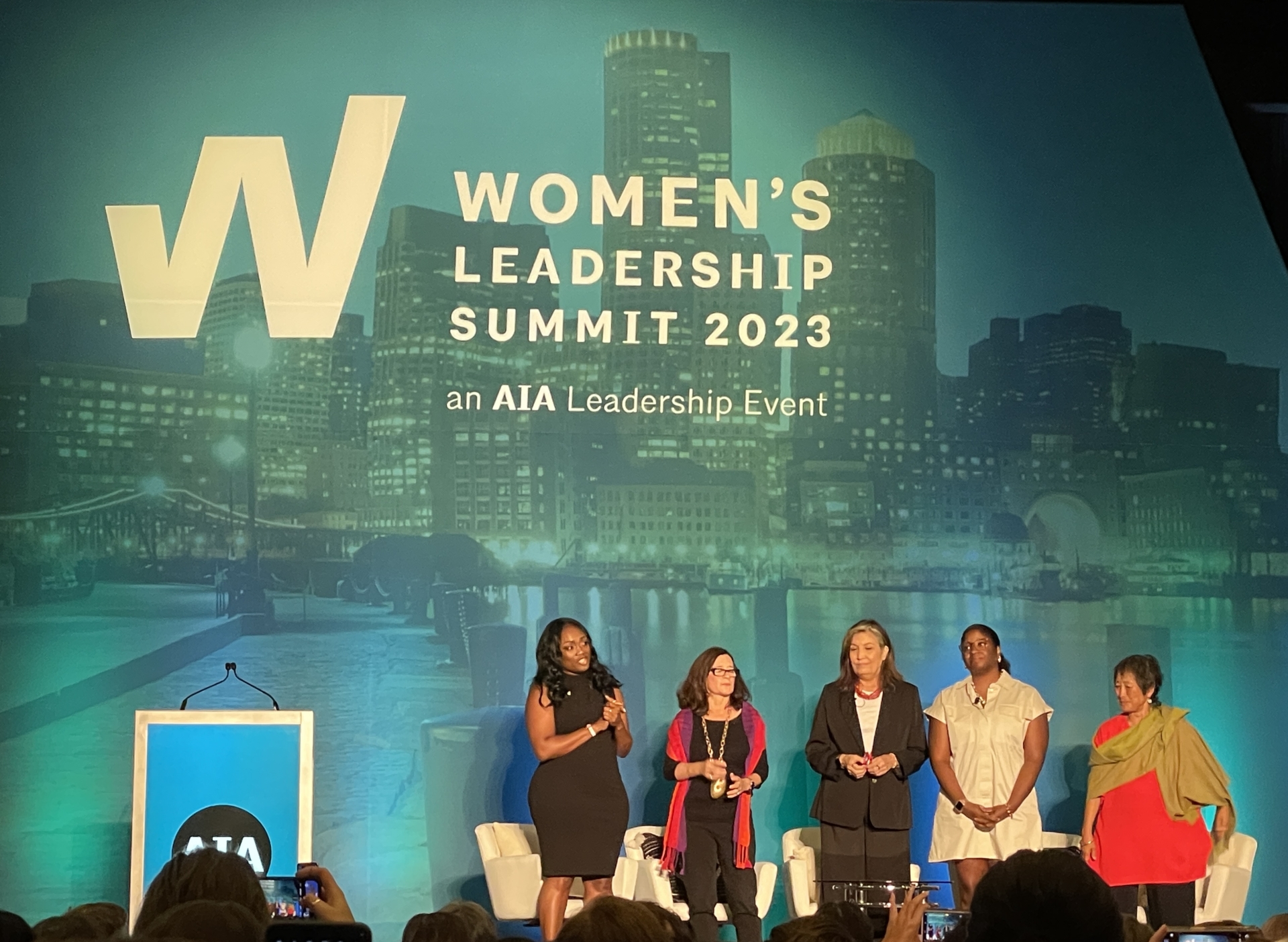
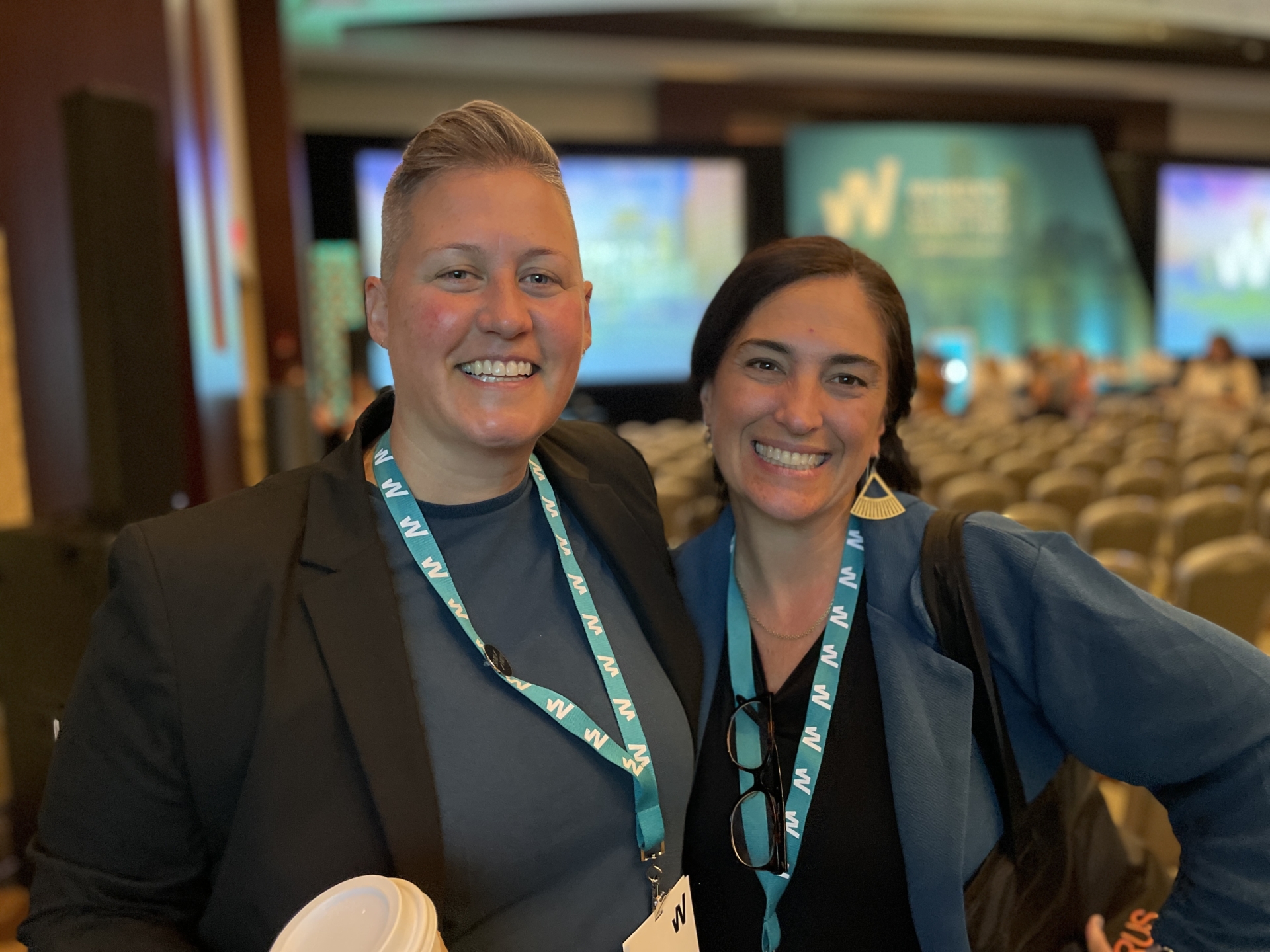
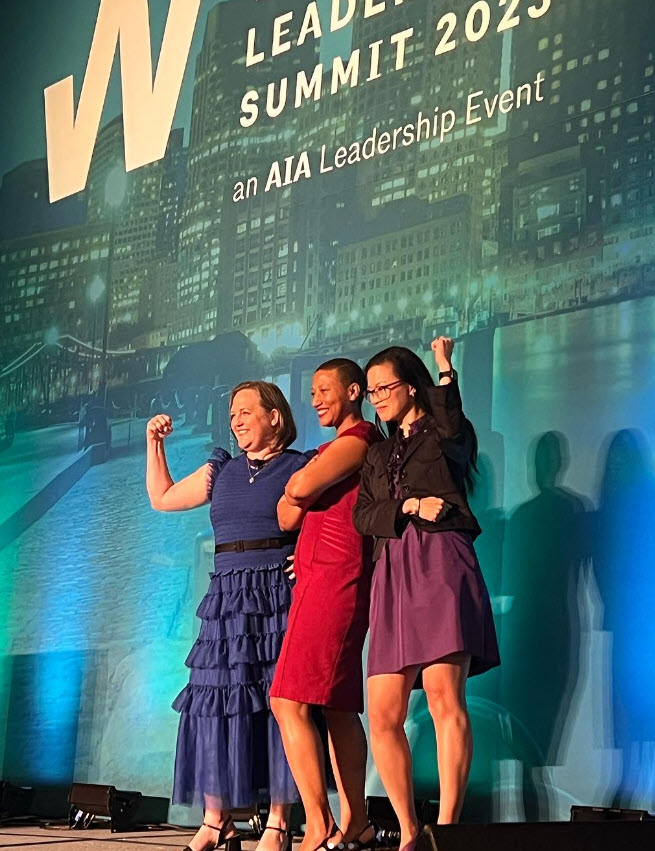
The focus on sustainable design, equitable design and creating more women leaders were my highlights. After two full days of meeting women from across the country and reconnecting with past classmates and coworkers from Syracuse University and Boston, the only thing left to do was find some clam chowder!